by AndrewMc | 12/29/2009 06:45:00 PM
We're fast approaching the end of the aughts. What are your highlights and lowlights?
Labels: AndrewMC, Open Thread
Labels: AndrewMC, Open Thread
Labels: Bastoche, Jeremy Young
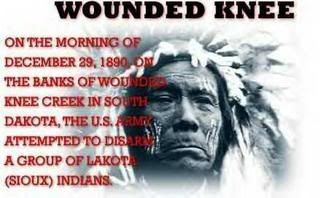
Jerome A. Green. “Washita.” p. 126.
Far across the Washita Valley, warriors observed the killing of the animals, enraged by what they saw.
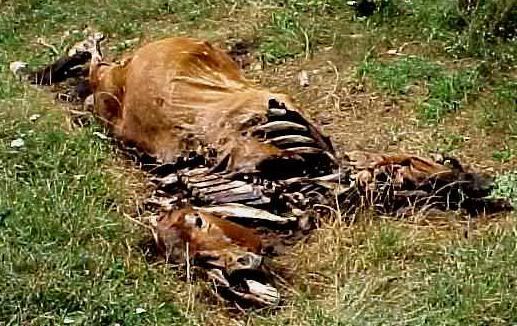
http://books.google.com/books?hl=en&lr=&id=_8_i4RoC-c4C&oi=fnd&pg=PP9&sig=PzXXLM0CyHIihEXH2rAS7cmyOIg&dq=Half+breed+-+the+remarkable+story+of+george+bent-+caught+between+the+worlds#PRA1-PA95,M1"
And so, when the Chiefs gathered to decide what the people should do, Black Kettle took his usual place among them. Everyone agreed Sand Creek must be avenged. But there were questions. Why had the soldiers attacked with such viciousness? Why had they killed and mutilated women and children?
It seemed that the conflict with the whites had somehow changed. No longer was it just a war over land and buffalo. Now, the soldiers were destroying everything Cheyenne - the land, the buffalo, and the people themselves.
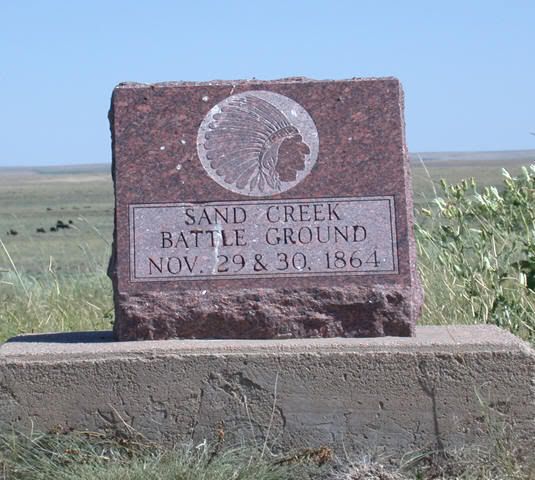
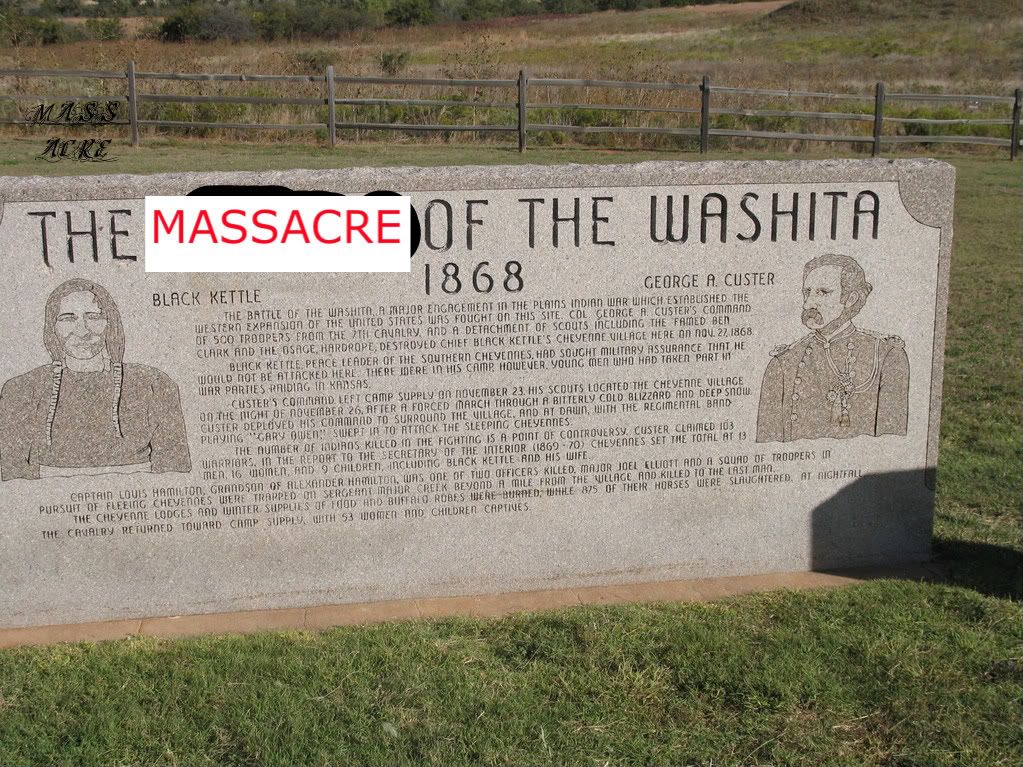
Petition to Re-name
The Washita Battlefield National Historic Site toThe Washita National Historic
Site of Genocide
AND WHERE AS:
According to the 1948 Convention on the Prevention and Punishment of the Crime of Genocide, genocide means any of the following acts committed with intent to destroy, in whole or in part, a national, ethical, racial or religious group as such:
(a) Killing members of the group;
(b) Causing serious bodily or mental harm to members of the group;
(c) Deliberately inflicting on the group conditions of life
calculated to bring about its physical destruction in whole or in part;
WE, the undersigned members of the Native American community and the public at large, request that this site of the attack by the United States military against 8,500 Plains Indians camped as prisoners of war along the Washita River in 1868 be designated as the Washita National Historic Site of Genocide.


Harjo: Burying the history of Wounded Knee
But Wounded Knee was 14 years after Little Bighorn. Would the soldiers have held a grudge that long and why would they take it out on Big Foot? They blamed Custer's defeat on Sitting Bull, who was killed two weeks before Wounded Knee. The Survivors Association members had the answer: ''Because Big Foot was Sitting Bull's half-brother. That's why Sitting Bull's Hunkpapa people sought sanctuary in Big Foot's Minneconjou camp.''
massacre:
n : the wanton killing of many people [syn: mass murder] v : kill a large number of people indiscriminately;
"The Hutus massacred the Tutsis in Rwanda" [syn: slaughter, mow down]
Source
White officials became alarmed at the religious fervor and activism and in December 1890 banned the Ghost Dance on Lakota reservations. When the rites continued, officials called in troops to Pine Ridge and Rosebud reservations in South Dakota. The military, led by veteran General Nelson Miles, geared itself for another campaign.
Source
Big Foot and the Lakota were among the most enthusiastic believers in the Ghost Dance ceremony when it arrived among them in the spring of 1890.
Red Cloud
"...A white man said the soldiers meant to kill us. We did not believe it, but some were frightened and ran away to the Badlands.(1)
(1): "Bury My Heart At Wounded Knee" by Dee Brown, pp. 441-442. (December, 1890).
"Later in the darkness of that December night (Dec. 28) the remainder of the Seventh Regiment marched in from the east and quietly bivouacked north of Major Whitside's troops. Colonel James W. Forsyth, commanding Custer's former regiment, now took charge of operations. He informed Whitside that he had received orders to take Big Foot's band to the Union Pacific Railroad for shipment to the military prison in Omaha.
..Colonel Forsyth informed the Indians that they were now to be disarmed. "They called for guns and arms," White Lance said, "so all of us gave the guns and they were stacked up in the center." The soldier chiefs were not satisfied with the number of weapons surrendered, so they sent details of troops to search the tepees. "They would go right into the tents and come out with bundles (sacred objects) and tear them open," Dog Chief said. "They brought our axes, knives, and tent stakes and piled them near the guns." Still not satisfied, the soldier chiefs ordered the warriors to remove their blankets and submit to searches for weapons...
...Some years later Dewey Beard (Wasumaza) recalled that Black Coyote was deaf. "If they had left him alone he was going to put his gun down where he should. They grabbed him and spinned him in the east direction. He was still unconcerned even then. He hadn't pointed his gun at anyone. His intention was to put that gun down. They came and grabbed the gun that he was going to put down...(1) in proceeding paragraph, p.445.
Source
...The massacre allegedly began after an Indian, who was being disarmed, shot a U.S. officer.
Source
Hotchkiss guns shredded the camp on Wounded Knee Creek, killing, according to one estimate, 300 of 350 men, women, and children.
My Journey to Wounded Knee
More people survived if they tried to escape through this tree row, because there was more tree cover.
More were massacred if they tried to escape through this tree row, because there was much less tree cover.
Source
"...A recurring dream in the mid-1980s directed a Lakota elder to begin the ride as a way to heal the wounds of the 1890 massacre. It continues today to honor the courage of the ancestors and to teach the young to become leaders...The Big Foot Ride began in 1987 at the urging of Birgil Kills Straight, a descendant of a Wounded Knee Massacre survivor. Each year, the riders have come together to sacrifice and pray for the 13-day trip from the Standing Rock Reservation beginning on the anniversary of the death of Sitting Bull and ending at Wounded Knee on Dec. 28, the day before the anniversary of the massacre..."
Source
"...The two-week Ride started in 1986 after a dream told one of its founders that it would "mend the sacred hoop" and heal the wounds of the famous massacre. For the first four years, the ride was led in intense cold by Arvol Looking Horse, keeper of the White Buffalo Calf Woman pipe bundle in Green Grass, S.D. It is now carried on by youths from the Lakota nation, starting in Grand River near Mobridge, S.D. on the Standing Rock Sioux reservation and continuing south 200 miles to Pine Ridge..."
Labels: Indians, Native Americans, winter rabbit, Wounded Knee

Labels: Christianity, Fox News, Joel Tscherne, religion
Source
8. DENIAL is the eighth stage that always follows a genocide. It is among the surest indicators of further genocidal massacres. The perpetrators of genocide dig up the mass graves, burn the bodies, try to cover up the evidence and intimidate the witnesses. They deny that they committed any crimes, and often blame what happened on the victims. They block investigations of the crimes, and continue to govern until driven from power by force, when they flee into exile.
Source
The term “redskins” actually refers to the Indian skins and body parts that bounty hunters had to show in order to receive payment for killing Indians, the National Congress of American Indians argued in a brief filed before the high court.
Leonard Crow Dog and Richard Erdoes. “Crow Dog.” pp. 6-7.
Only when we saw them building roads through our land, wagons at first, and then the railroad, when we watched them building forts, killing off all the game, committing buffalo genocide, and we saw them ripping up our Black Hills for gold, our sacred Paha Sapa, the home of the wakinyan, the thunderbirds, only then did we realize what they wanted was our land. Then we began to fight. For our earth. For our children. That started what the whites call the Great Indian Wars of the West. I call it the Great Indian Holocaust.
Source
And...quoting from Chapter 5 - The Earth Is Our Mother from the book The State of Native America, Genocide, Colonization and Resistance, edited by Annette Jaimes, ISBN 0-89608-424-9:
- snip –
..Even the the nazi tactic of concentrating 'undesireables' prior to their forced 'relocation or reduction' was drawn from actual U.S. examples, including internment of the Cherokees and other 'Civilized Tribes' during the 1830's before the devastatingly lethal Trail of Tears was forced upon them, and the comparable experience of the Navajo people at the Bosque Redondo during the period 1864-68.
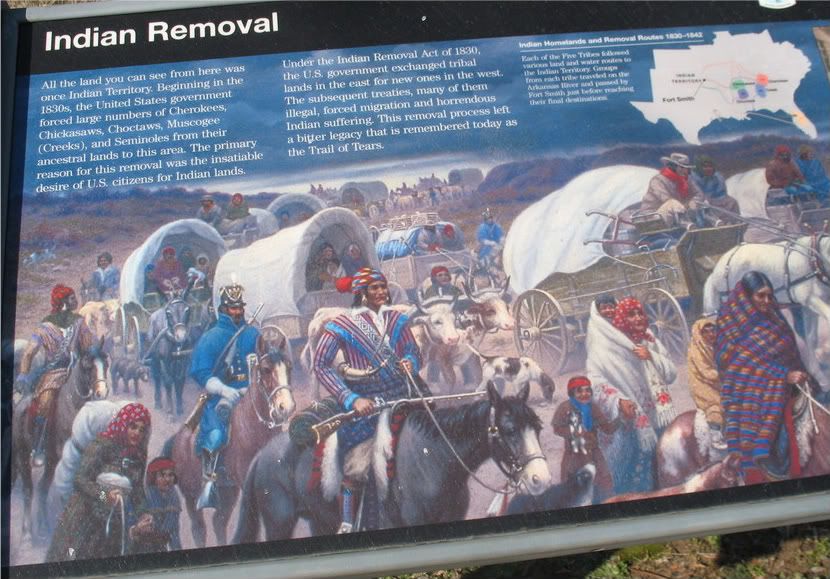
http://www.mail-archive.com/futurework@scribe.uwaterloo.ca/msg08639.html\
Newspapers of the day publicized bounty notices on current “uprisings.” A 1922 article in the Rocky Mountain News reported a $25 reward for those who defeated “efforts to sign the roads into the Navajo reservation ... The redskins are said to tear out or carry away all sign-boards.”
The Rocky Mountain News had political and proprietary interests in the Colorado gold and in clearing the territory of Indians to get at it. The newspaper started a drumbeat against Cheyenne Dog Soldiers and other “hostiles” that culminated in the Sand Creek Massacre of a peace camp of Cheyenne elders, pregnant women and children on Nov. 29, 1864.
The News celebrated the “Battle” of Sand Creek, lauding the Colorado Volunteers’ “Bloody Thirdsters” as having “covered themselves with glory.” By contrast, the U.S. Army officers on site reported it as the Sand Creek “Massacre” and described the soldiers as “barbaric” and “covered with gore.”

Denials Of The Genocide Of Native Americans
There are many other examples of denial by perpetrators who wish to escape negative reactions to their deeds. More troubling are the later denials by people not directly involved in the genocidal events but who appear to have ideological reasons for their denials.
http://www.bluecorncomics.com/stype796.htm
By Michael Medved
Wednesday, September 19, 2007
Moreover, the real decimation of Indian populations had nothing to do with massacres or military actions, but rather stemmed from infectious diseases that white settlers brought with them at the time they first arrived in the New World.
- snip –
A nation ashamed of its past will fear its future.
Twelve Ways To Deny A Genocide
3. Claim that the deaths were inadvertent.
As a result of famine, migration, or disease, not because of willful murder.
Pilgrims Pilloried in streets of Plymouth
Twelve Ways To Deny A Genocide
5. Rationalize the deaths as the result of tribal conflict, coming to the victims out of the inevitability of their history of relationships.
This was a witty rejoinder to my observation that the history of every nation includes its share of invasions, dispossessions and injustices.
- snip -
Plymouth protesters insist that America was a tragic mistake, our history is ignoble and the only valid reason for our continued existence is to provide racial reparations. Such attitudes, which dominate the councils of the elite, are the single greatest threat to our survival.
http://www.facinghistory.org/resources/facingtoday/confronting-genocide-denial
Denial of genocide is the final stage of genocide. It is what Elie Wiesel has called a "double killing." Denial murders the dignity of the survivors and seeks to destroy remembrance of the crime. In a century plagued by genocide, we affirm the moral necessity of remembering.
Labels: genocide, Native Americans, winter rabbit

Whatever else it said about America, her return brought into focus a big question for Republicans as they watched the intense reactions she generated: To what extent should they try to energize their electoral prospects by hitching themselves to the powerful but volatile strain of populism — characterized by anti-elitism and deep skepticism of government — that Ms. Palin has come to embody?
Populists, from William Jennings Bryan and Huey Long through Joseph McCarthy and George Wallace, have always been divisive and polarizing. Their job is not to win national elections but to carry the torch and inspire the faithful, and this Palin seems poised to do.
The people are demoralized; most of the States have been compelled to isolate the voters at the polling places to prevent universal intimidation and bribery. The newspapers are largely subsidized or muzzled, public opinion silenced, business prostrated, homes covered with mortgages, labor impoverished, and the land concentrating in the hands of capitalists. The urban workmen are denied the right to organize for self-protection, imported pauperized labor beats down their wages, a hireling standing army, unrecognized by our laws, is established to shoot them down, and they are rapidly degenerating into European conditions. The fruits of the toil of millions are badly stolen to build up colossal fortunes for a few, unprecedented in the history of mankind; and the possessors of these, in turn, despise the Republic and endanger liberty. From the same prolific womb of governmental injustice we breed the two great classes—tramps and millionaires. The national power to create money is appropriated to enrich bond-holders; a vast public debt payable in legal-tender currency has been funded into gold-bearing bonds, thereby adding millions to the burdens of the people.
Reagan’s genius lay in taking Thurmond’s states’ rights philosophy and dressing it in respectable clothes, turning it into opposition to “big government.” What some saw as unsophisticated prejudice received a makeover worthy of one of those television shows that turns a wallflower into a magazine cover. Employing anti-government rhetoric that mirrored Thurmond, the GOP reversed the country’s perceptions about government as a force for equity and turned it into the enemy of the people. (The Strange Death of Liberal America)
This system is sustained simply by the cooperation of the beneficiaries of a tariff, and that they are held together by “the cohesive power of plunder.”…You can impose no tax for the benefit of the producer of raw material which does not find its way, through the various forms of manufactured product, and at last press with accumulated weight upon the person who uses the finished product. ( William Jennings Bryan and Mary Bryan, Speeches of William Jennings Bryan, New York: Funk and Wagnalls, 1913. pp. 3-78.)
Why are we right? Because, Mr. Chairman. We are demanding for this people equal and exact justice to every man, woman and child. We desire that the laws of this country shall not be made, as they have been, to enable some to get rich while many get poor.
The day will come, Mr. Chairman—the day will come when those who annually gather about this Congress seeking to use the taxing power for private purposes will find their occupation gone, and the members of Congress will meet here to pass laws for the benefit of all the people. That day will come and in that day, to use the language of another, “Democracy will be king! Long live the king!”
The speech was like a beam of sunlight. It abounded in apt illustration. It was full of quotations, showing that the author of it had read, and occasionally there were passages that were so stirring that they quite betrayed the usually well-behaved audience in the galleries into storms of applause.
To those who had not heard him before, he was indeed a prodigy. Few men so young ever had held the House so long and so intent. His illustrations, humorous and sentimental, including quotations of poetry, were apt and they were well-delivered.
The number of sheep has continually decreased, until now if every woman in the State [of Nebraska] named Mary insisted upon having a pet lamb at the same time, we would have to go out of the state to get enough lambs to go around.
RAINES: I want to say to the gentleman that no trade paper was ever printed that could contain a list of all the tinplate liars of the United States.
BRYAN: I suppose that paper, then, has no biographical sketch of my friend from New York. I asked my friend from new York if we had any tin industries in this country—I have here a statement that the average price of tin plate for 1888 was $4.45 a box…The average price for 1891 was $5.68 a box…And I will place this on record as my authority that no article could be mentioned upon which the price had been increased.
For many politicians, family life is sandwiched in between long hours in public service. Palin wants us to know that for her it is the reverse. Political success is an accident that says nothing about you. Success as a wife, mother and citizen says everything.
Can a candidate who portrays herself as a woman of the people spend this much on clothes and remain credible?
Her mouth may be saying no to Palin for President in 2012, but her clothes are saying maybe.

He would have no enemies on the floor of the House. Search The Record during the two sessions of Congress he was entitled to occupy its pages, and not an instance can be found where he made a reply to an antagonist that would prevent him from meeting his opponent face to face in a moment after the debate.
The landscape is littered with the bodies of those who crossed Sarah.
Labels: Populism, Progressivism, Ralph Brauer, Sarah Palin, William Jennings Bryan
Labels: AndrewMC, Pearl Harbor
Dr. John Russell, Senior Professor in the English/Fine Arts/Modern Languages Department, passed away early this morning, after a long illness.
Friends may call at Dooley's Funeral Home, 218 North Avenue, W., Cranford, on Monday, December 7 from 2:00 - 4:00 pm, and from 7:00 - 9:00 pm.
The funeral service will be held on Tuesday, December 8 at 10:00 am, also at Dooley's, followed by internment at Fairview Cemetery, Westfield.
The family has asked that donations be made, in lieu of flowers, to the Cancer Research Institute, One Exchange Plaza, 55 Broadway, Suite 1802, New York, NY 10006, in the name of John Joseph Russell.
A valued and long serving member of the ENG/FIA/ML Dept., he will be missed by his colleagues, students and friends.
Prof. Robert Comeau
Coordinator of Credit English
After a comprehensive review, the Board of Trustees has, at my recommendation, voted unanimously to eliminate our intercollegiate football program in order to redirect those resources toward academic initiatives and need-based scholarships.
 Beer of the week? Yes, Samuel Adams. But no, not the regular Sam Adams Boston Lager in the blue-label bottle that, while good, is now just an ordinary beer.
Beer of the week? Yes, Samuel Adams. But no, not the regular Sam Adams Boston Lager in the blue-label bottle that, while good, is now just an ordinary beer.Labels: AndrewMC, Friday Ramblings
Labels: AndrewMC, Open Thread